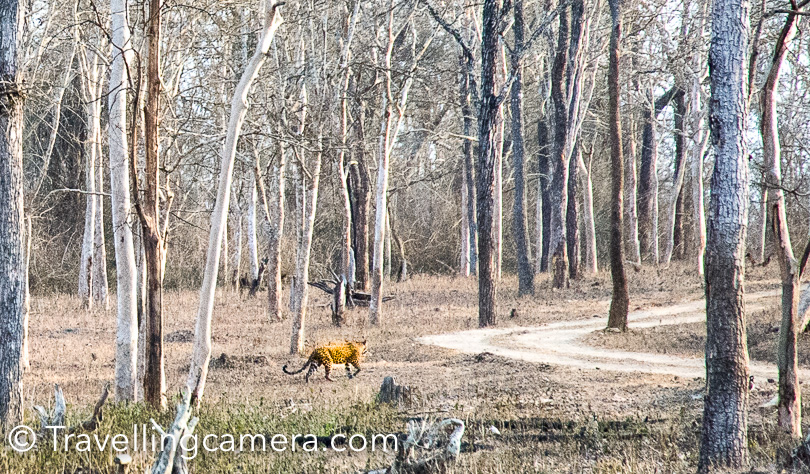In the heart of the Indian wilderness, amidst the dense jungles and rugged terrain, lies a majestic predator that commands both fear and awe – the leopard. Renowned for its elusive nature and stealthy movements, the leopard is a symbol of grace, power, and untamed beauty. Join us as we embark on a thrilling journey into the wild to witness firsthand the mesmerizing spectacle of leopard sightings in India.
The Enigmatic Leopard
The leopard, or Panthera pardus, is one of India's most iconic big cats, known for its adaptability, agility, and solitary nature. With its golden coat adorned with rosette-shaped spots, the leopard blends seamlessly into its surroundings, making it a master of camouflage. Found across various habitats, from dense forests and grasslands to rocky outcrops and scrublands, leopards are skilled hunters and elusive creatures, often shrouded in mystery.
Exploring Leopard Country
India is home to a significant population of leopards, with sightings reported in various national parks, wildlife sanctuaries, and forested regions across the country. From the lush forests of Western Ghats to the arid landscapes of Rajasthan and the foothills of the Himalayas, leopards inhabit diverse ecosystems, adapting to their surroundings with remarkable ease. Wildlife enthusiasts and photographers flock to these leopard habitats, hoping to catch a glimpse of these elusive predators in their natural environment.
Thrilling Encounters
A leopard sighting in India is not just a visual spectacle; it is a visceral experience that ignites the senses and quickens the pulse. Whether glimpsed prowling stealthily through the undergrowth or perched majestically on a rocky ledge, the sight of a leopard in the wild is unforgettable. The anticipation, the adrenaline rush, and the sheer thrill of being in the presence of such a magnificent creature leave an indelible mark on all who witness it.
Conservation Challenges
Despite their remarkable adaptability, leopards face numerous threats in the wild, including habitat loss, poaching, human-wildlife conflict, and illegal wildlife trade. Encroachment into their natural habitats, retaliatory killings, and fragmentation of landscapes pose significant challenges to their long-term survival. Conservation efforts aimed at protecting leopard habitats, mitigating human-wildlife conflict, and raising awareness about the importance of coexistence are crucial for ensuring the continued survival of these iconic predators.
In India, several regions are renowned for their leopard populations, offering wildlife enthusiasts and photographers ample opportunities for leopard sightings. Here are some of the main places in India known for leopard sightings:
Ranthambore National Park, Rajasthan: Famous for its population of Bengal tigers, Ranthambore National Park is also home to a significant number of leopards. The park's diverse landscapes, including forests, grasslands, and rocky outcrops, provide ideal habitat for leopards to thrive.
Jim Corbett National Park, Uttarakhand: India's oldest national park, Jim Corbett National Park, is not only known for its majestic tigers but also for its leopard population. Situated in the foothills of the Himalayas, the park's rugged terrain and dense forests offer excellent opportunities for leopard sightings.
Bandipur Tiger Reserve, Karnataka: Located in the Nilgiri Biosphere Reserve, Bandipur Tiger Reserve is renowned for its rich biodiversity and diverse wildlife. Leopards are often spotted here, especially in the forested areas and along the park's network of water bodies.
Sariska Tiger Reserve, Rajasthan: Similar to Ranthambore, Sariska Tiger Reserve in Rajasthan is known for its leopard population, along with Bengal tigers. The park's rocky hills and dense vegetation provide ample cover for leopards to roam and hunt.
Kabini Wildlife Sanctuary, Karnataka: Part of the Nagarhole National Park, Kabini Wildlife Sanctuary is a haven for wildlife enthusiasts. Leopards are frequently sighted here, particularly along the banks of the Kabini River and in the forested areas surrounding it.
Satpura National Park, Madhya Pradesh: Satpura National Park is known for its rugged terrain, deep valleys, and diverse flora and fauna. The park's relatively undisturbed wilderness makes it an ideal habitat for leopards, which are often seen prowling through the forested hills.
Bera, Rajasthan: Bera is a lesser-known destination for leopard sightings, but it is gaining popularity among wildlife enthusiasts. Situated in the Aravalli Range, Bera is home to a thriving population of leopards, which are often spotted amidst the rocky outcrops and scrubland.
These are just a few of the main places in India where leopard sightings are common. However, leopards can be found in various other wildlife reserves, sanctuaries, and forested regions across the country, making India a prime destination for wildlife enthusiasts seeking to observe these magnificent big cats in their natural habitat.
As we conclude our journey into the world of leopard sightings in India, we are reminded of the fragility and beauty of the natural world. The sight of a leopard in its natural habitat serves as a poignant reminder of the interconnectedness of all living beings and the need to preserve and protect our precious wildlife heritage. So, the next time you find yourself in the wilderness of India, keep your eyes peeled and your senses attuned – for you never know when you might be blessed with the exhilarating sight of a leopard on the prowl.









.jpg)
Comments